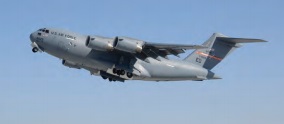Chapter: Flight and Ground Experimental Test Technologies, new invention technology, Research project papers,
Vehicle Integrated Propulsion Research (VIPR)

Vehicle Integrated
Propulsion Research (VIPR)
A major aspect of
NASA's propulsion health management development work is demonstrating and
evaluating emerging technologies on operational engines. Harsh environment
conditions within an engine present significant challenges for the integration
and application
of aircraft health
management technologies. VIPR is a program for developing real-world tests to
evaluate such emerging technologies.
Work to date: The VIPR I tests
occurred in 2011 at Armstrong and involved model-based performance
estimation and diagnostic work. In 2013, follow-on VIPR II tests evaluated
additional engine health
management sensors and
algorithms under nominal and faulted engine operating scenarios.
Looking ahead: In upcoming VIPR III
tests, researchers will inject volcanic ash into a commercially
representative high-bypass turbofan. NASA sensors installed in the engine will
measure how and where the engine degrades after several hours of exposure to
low and moderate ash concentrations. The experiment will provide useful
information
to aircraft and engine
manufacturers, airline operators, and aviation regulators as they evaluate the
risks that ash hazards pose to aviation.
Partners: VIPR partners include U.S. Air Force, Federal
Aviation Administration, U.S. Geological Survey, Pratt &
Whitney, GE Aviation, Rolls-Royce, The Boeing Company, Makel Engineering, and
academia.
Benefits
Advances research: Accelerates
the technology readiness level for aviation safety innovations
Increases safety: Enhances safety
features implemented on aircraft to handle a wide variety of potentially
dangerous conditions and situations
Applications
Detecting and diagnosing engine faults Testing
health management technologies Designing fault-tolerant engines
Flight and Ground Experimental Test Technologies
Armstrong conducts innovative flight research that continues to
expand its world-class capabilities, with special expertise in research and
testbed platforms, science platforms, and support aircraft. Re-searchers place
particular emphasis on providing accurate flight data for research aimed at
designing next-generation flight vehicles. Described here are research projects
that are seeking to increase safety, reduce costs, and dramatically decrease
testing and approval times. Armstrong's new verification and validation
(V&V) simulation test bench is particularly innovative as it integrates
reconfigurable software models for multiple aircraft components. These models
enable high-fidelity simulations to be performed more easily and at
significantly faster rates than are possible with hardware-centric test
benches.
Related Topics